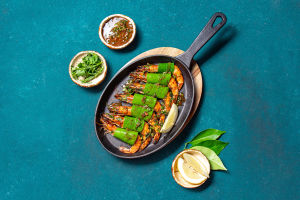Seaweed salad, a Japanese culinary gem, has taken the global food scene by storm. Known for its refreshing flavors and crunchy texture, it’s a favorite side dish that pairs well with sushi or can be enjoyed solo.
But not all seaweeds are perfect for salads, while others might surprise you in ways you didn’t expect. Let’s dive into this underwater garden and discover what makes seaweed salad so unique, how to pick the right varieties, and how to make the most of this versatile ingredient.
Wakame, Nori, and Kombu: The Holy Trinity
Wakame is the undisputed star of seaweed salads. Its tender, slightly sweet flavor and vibrant green hue make it the go-to choice for this dish. Simply soak dried wakame in water for a few minutes, and it transforms into silky strands ready for seasoning. Nori, while typically associated with sushi, can also be shredded into salads for a crispy texture. Kombu, known for its umami richness, is better suited for broths but can be thinly sliced for a more robust seaweed salad experience. When shopping, look for dried seaweed labeled specifically for salads to ensure you're getting the best quality.
Not All Seaweeds Are Salad-Friendly
Seaweed comes in various shapes, sizes, and flavors: some delicious, others… let’s just say “acquired”. Red algae varieties, like agar or ogonori, often used in restaurant salads, have a jelly-like texture that’s not everyone’s cup of tea. Additionally, avoid foraging wild seaweed unless you’re an expert, as not all are edible or safe. When in doubt, stick with trusted brands or shop at specialty Asian markets for quality dried seaweed.
Seaweed Smarts: Storage and Sustainability
Seaweed salad is best enjoyed fresh, but if you make extra, store it in an airtight container for up to two days. Beyond taste, it’s worth noting that seaweed is a sustainable superfood. It grows rapidly without the need for fertilizers or fresh water and is packed with nutrients like iodine, magnesium, and antioxidants. However, too much iodine can be overwhelming for your system. Stick to small servings and savor the ocean’s bounty responsibly.
Remember to choose the right seaweed, experiment with dressings, and respect the limits of your taste buds. Next time you’re at the market or planning a homemade Japanese dinner, grab some wakame and unleash your inner chef.


